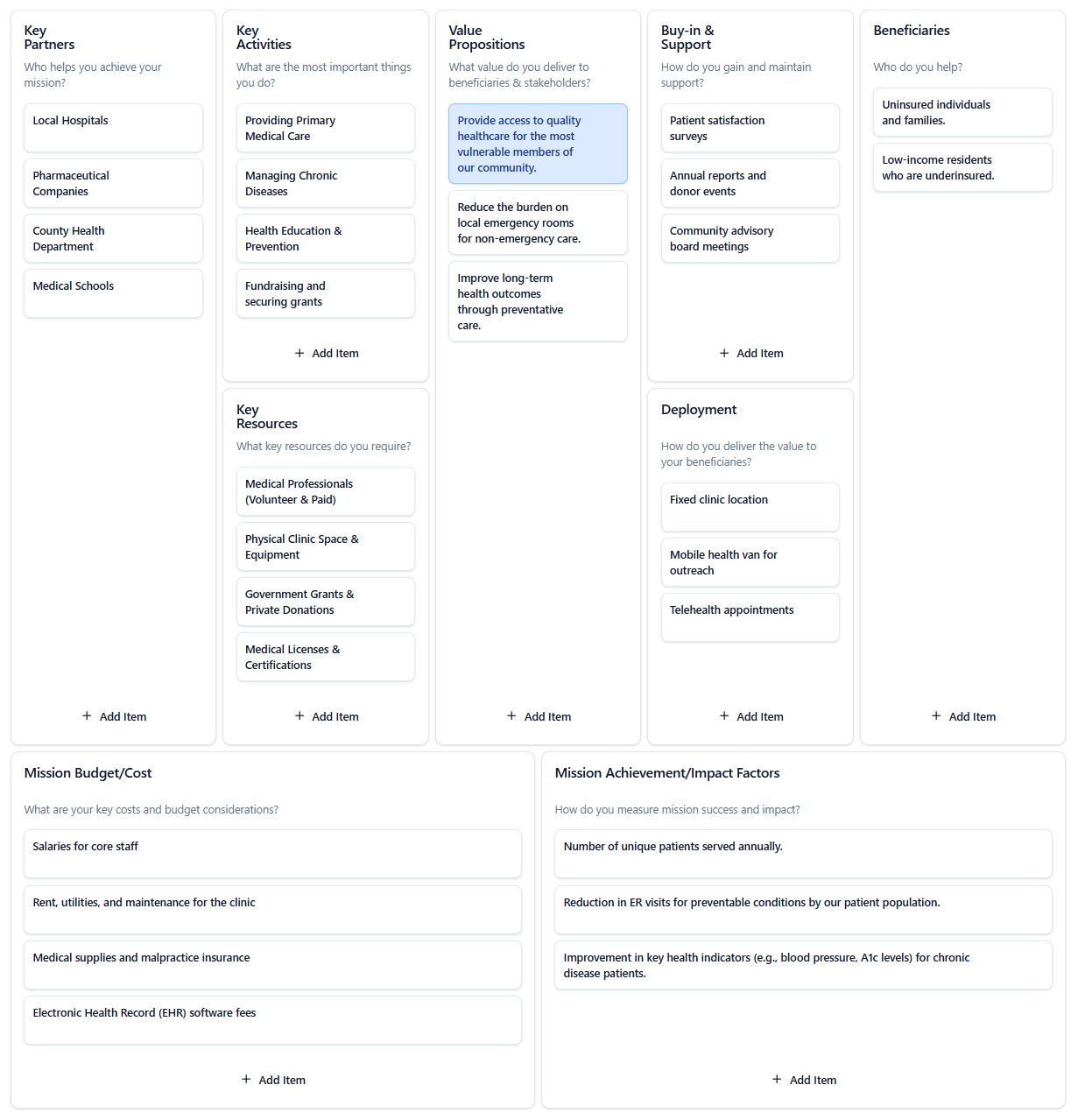Healthcare
Community Health Clinic
A non-profit clinic providing free and low-cost primary medical care to uninsured and low-income populations.

Analysis & Interpretation
Background
This canvas describes a vital community resource: a non-profit health clinic serving uninsured and low-income populations. The model is built on a complex web of partnerships and a blend of paid and volunteer resources to deliver essential healthcare services.
Key Strategic Insights
- Ecosystem Integration is Critical for Survival: The clinic cannot operate in a vacuum. It is deeply dependent on its ‘Key Partners’—local hospitals, the health department, and pharmaceutical companies—for referrals, funding, and supplies. The model’s sustainability relies on managing this complex healthcare ecosystem.
- Leveraging Human Capital: The ‘Key Resources’ highlight a blend of ‘Volunteer & Paid’ medical professionals. The ability to attract and retain high-quality volunteers (e.g., through partnerships with medical schools) is a critical success factor that allows the clinic to maximize its impact with limited financial resources.
- Value Proposition Extends Beyond the Patient: The model wisely includes a ‘Value Proposition’ for the broader healthcare system: ‘Reduce the burden on local emergency rooms’. This is a powerful argument when seeking funding from hospitals or government entities, as it frames the clinic as a cost-saving solution, not just a charity.
Strategic Summary
This is a classic non-profit service delivery model where operational efficiency and strong partnerships are paramount. The biggest challenge is securing a stable, diverse funding base to mitigate the risk of relying on any single grant or donor. The strategic focus should be on tracking and communicating the clinic’s impact not just on patients, but on the entire local healthcare system, to strengthen its case for ongoing support.
How This Was Built
This canvas illustrates how a mission-driven initiative can be visualized and refined using AI tools to connect purpose with measurable outcomes.

AI-Powered Ideation
The AI Ideation Tool proposed initial content for the Beneficiaries, Key Partners, and Mission Achievement sections, helping define impact pathways and collaboration points.

Color Coding for Focus Areas
Colors separated operational, strategic, and social impact elements, while tags grouped related efforts such as community engagement and resource support.

AI Evaluation for Feasibility
Once the map was filled, the AI Review Engine analyzed the balance between goals and available resources, highlighting where further partnerships could amplify results.
Bring This Example to Life
Open this example in the app to explore your mission from every angle, adjust your strategies, and see how AI tools can help translate vision into measurable outcomes.
